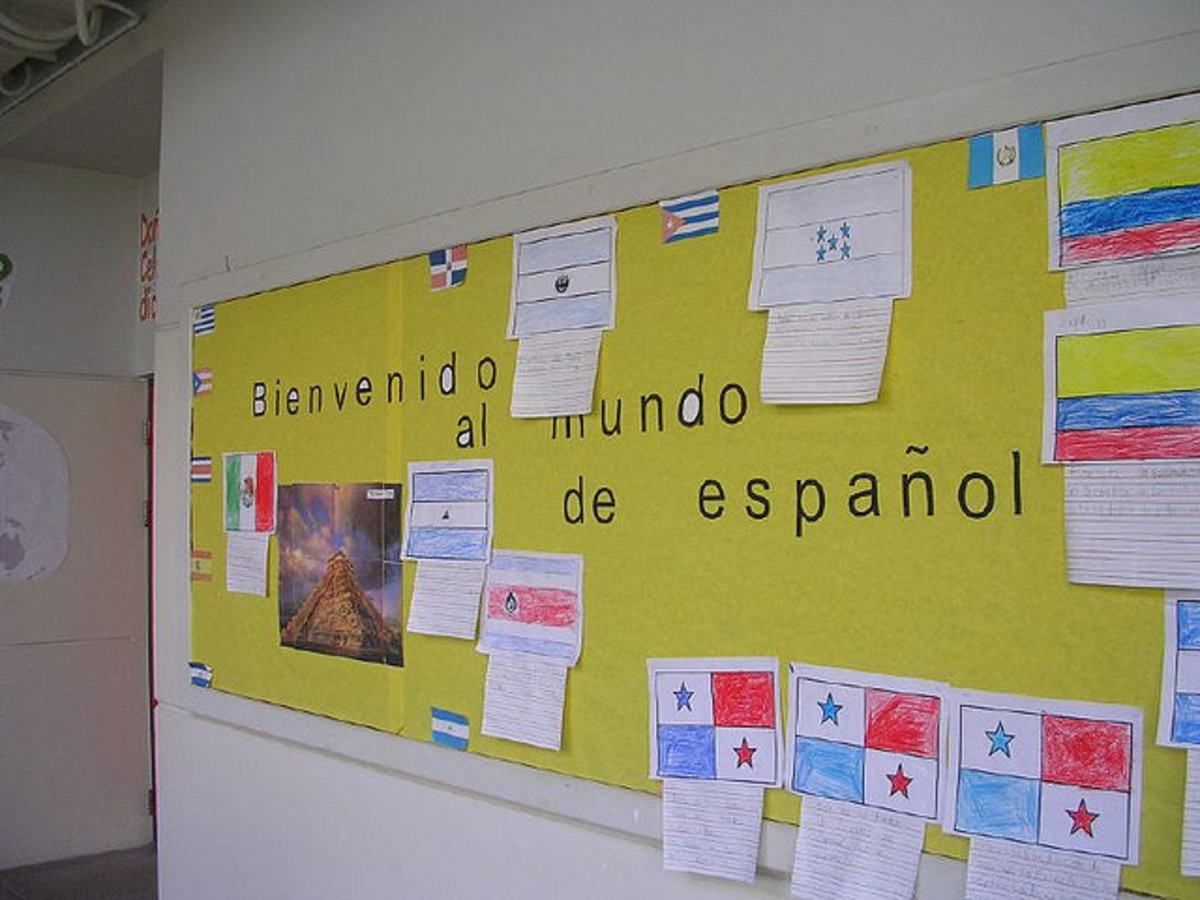Spanish Lesson Fifty-Four: Ordinal Numbers

Evening Readers!
Yeah, I know, it is kinda late. Well what happened was, I fell asleep and didn't wake up until a couple hours later. Anyhow, I hope you all enjoy today's lesson and that it helps you count your places in Spanish. Don't know what I mean? Well continue on with the lesson to find out! Thanks for reading and enjoy the rest of your day!

Objectives
- To Be Able to differentiate between Cardinal Numbers and Ordinal Numbers in Spanish
- To Be Able to use Ordinal Numbers in everyday Spanish conversation
- To Be Able to place Ordinal Numbers properly in a sentence
What's Most Important About Learning A New Language?
Ordinal Numbers Vs. Cardinal Numbers
Hey Readers! Welcome to today's lessons! I thought I'd take you through Ordinal Numbers today. You're probably scratching your head and wondering exactly what Ordinal Numbers are. Well this section will explain the difference between Cardinal and Ordinal Numbers. We use these numbers in English as well as in Spanish.
Cardinal Numbers are simply the first numbers you ever learn in Spanish. They are meant for numbers and counting purposes. So Cardinal Numbers are our numbers that are meant to count up and specify the number of things we are referring to.
Ordinal Numbers are meant to describe an object in order of placement. Thus first, second, third are ordinal numbers. These numbers are useful in conversation, recipes, and just all around. You can use these numbers to discuss placement of things you'll have to do, the placement of racers in a race, etc.

English Word
| Spanish Equiv
|
|---|---|
First
| Primero(a)
|
Second
| Segundo(a)
|
Third
| Tercero(a)
|
Fourth
| Cuarto(a)
|
Fifth
| Quinto(a)
|
Sixth
| Sexto(a)
|
Seventh
| Séptimo(a)
|
Eighth
| Octavo(a)
|
Ninth
| Noveno(a)
|
Tenth
| Décimo(a)
|
Today's Vocabulary
Hey Readers!
So the last time we discussed vocabulary we were discussing a theme. We're also discussing a theme today as well so your vocabulary this week refers to the theme. To your right are the ordinal numbers for 1st-10th in Spanish. Today's lesson's will explain to you how to use them in everyday language. Also continue to practice everyday to retain your language. That's most important part. I hope you all enjoy it! Thanks for reading!
Oh and also, if you'd like any additional help, feel free to send me a message on profile page. I'm always willing to help!
Main Uses
- To Specify Order
- To Specify Importance
- To Refer To Moments in Time
- To Refer To Street Numbers
Using Ordinal Numbers
Hey Everyone!
So since you've learned what Ordinal Numbers are and what they are used for, now you can actually use them in your sentences. If you noticed, I only included 1st-10th. Yes there are words for the others, however, the others aren't used as commonly as you'd think. There's a reason for that I'm sure, but I'll explain as we go further. So welcome to today's lesson and I hope you enjoy. Now let's begin with their properties
Ordinal Numbers are very similar to adjectives in a way. They each still must represent a number and a gender. They normally precede the noun save for cases that specify royalty, street numbers, and centuries.
La primera vez. The First time. Note that primero turned into "primera" and its article changed to represent the gender specified in the sentence. Check out this next example.
Las primeras mesas pueden ir al frente. The first tables can go to the front. Note that the ordinal number matches the number and subject once again. The same rule can go for nouns that are masculine except for Primero and Tercero.
El primer rey. The first king. Note that the "o" on Primero was taken away. This rule works also for tercero. When there is a masculine noun coming after the primero or tercero, the the "o" at the end of both words is dropped.
El tercer rey. The third king.
Okay now that you've learned those rules. Remember that Ordinal numbers come before the noun in most cases. Here are the other cases in which it doesn't.
La calle sexta. The sixth street.
Aubrey quinto. Aubrey the fifth (the fifth Aubrey).
Another note: Cardinal Numbers are used as ordinal numbers from time to time and placed after the noun much like an adjective. This is only used in cases when you need a cardinal number that comes after 10th. Every other case, use a cardinal number. There are links to refer to other Ordinal numbers if you'd like to learn those as well. Until then, use a cardinal number to explain things that come after 11th. Check out this example.
La calle veintidos. The street twenty (the twentieth street). You get it? If you need more help, watch the video below and check out the links and references listed. Thanks so much for reading!
Oh! I almost forgot. Next week we will be discussing Math in Spanish. Yeah like adding and subtracting and stuff. You'll enjoy it I promise!
- Ordinal Numbers
Spanish grammar. Discussion: ordinal numbers. - The Ordinal Numbers in Spanish
Ordinal numbers are those such as 'first,' 'second' and 'third' in English, or 'primero,' 'segundo' and 'tercero' in Spanish. - Ordinal Numbers | SpanishDict Answers
Overview Ordinal numbers, as the name suggests, are adjectives that indicate the order of nouns in a series. Ordinal Numbers Below you will find a table of Spanish ordinal numbers. All ordinal numbers must match the noun they modify in gender and num - Spanish Lesson - Ordinal Numbers - YouTube
In this video I briefly cover ordinal numbers in Spanish. senorbelles.com youtube.com/senorbelles twitter.com/senorbelles facebook.com/senorbelles senorbelle...








